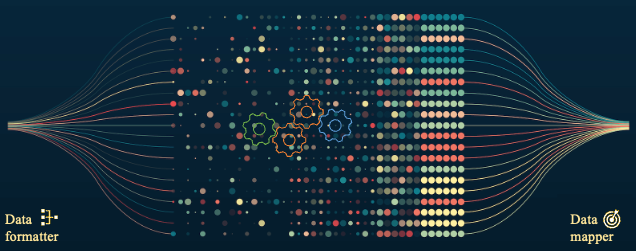
In the modern era of big data, the challenge of integrating and analyzing data from various sources has become increasingly complex. Different data providers often use diverse formats and structures, leading to significant challenges in achieving data interoperability. This complexity necessitates robust mechanisms to convert and harmonize data, ensuring they can be effectively used for analysis and decision-making. SEDIMARK has identified two critical components in this process and is actively working on them: data formatter and data mapper.
A data formatter is designed to convert data from various providers, each using different formats, into the NGSI-LD standardized format. This standardization is crucial because it allows data from disparate sources to be compared, combined, and analyzed in a consistent manner. Without a data formatter, the heterogeneity of data formats would pose a significant barrier to interoperability. For example, data from providers might be in XLSX format, another in JSON, and yet another in CSV. A data formatter processes these different formats, transforming them into a unified format that can be easily managed and analyzed by SEDIMARK tools.
A data mapper comes into play after data processing to store the data and maps it to a specific data model. This process involves not only aligning the data with the model but also enriching it with quality metrics and metadata. During this stage, the data mapper adds valuable information about data quality obtained during the data processing step, such as identifying outliers and their corresponding anomaly scores, and missing and redundant data identification. This enriched data model becomes a powerful asset for future analyses, giving a complete picture of the data.By converting various data formats into a standard format and then mapping and enriching the data, SEDIMARK achieves a higher level of data integration. This process ensures that data from multiple sources can be used together seamlessly, facilitating more accurate and comprehensive analyses. Moreover, the inclusion of data quality metrics during the mapping process adds a layer of reliability and trustworthiness to the data. Information about outliers, missing data, and redundancy is crucial for data scientists and analysts, as it allows them to make informed decisions and apply appropriate processing techniques.